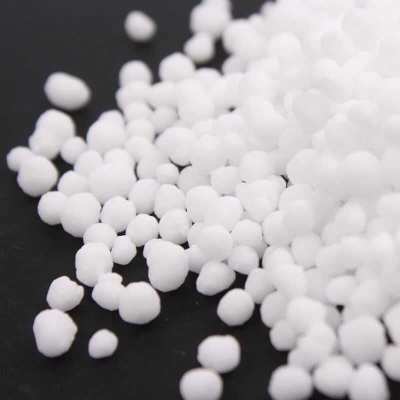-
Categories
-
Pharmaceutical Intermediates
-
Active Pharmaceutical Ingredients
-
Food Additives
- Industrial Coatings
- Agrochemicals
- Dyes and Pigments
- Surfactant
- Flavors and Fragrances
- Chemical Reagents
- Catalyst and Auxiliary
- Natural Products
- Inorganic Chemistry
-
Organic Chemistry
-
Biochemical Engineering
- Analytical Chemistry
- Cosmetic Ingredient
-
Pharmaceutical Intermediates
Promotion
ECHEMI Mall
Wholesale
Weekly Price
Exhibition
News
-
Trade Service
Gallium nitride (GaN), as one of the core materials of the third-generation wide-bandgap semiconductor, has excellent characteristics such as high breakdown field strength, high saturated electron drift rate, strong radiation resistance and good chemical stability.
, High-power, high-efficiency optoelectronics, power electronics and ideal materials for microelectronics
.
Gallium nitride has many advantages.
One of the classic application cases is that high-quality gallium nitride epitaxial wafers can be grown with gallium nitride as the substrate, and the internal defect density can be reduced to that of sapphire as the substrate.
One thousandth of the epitaxial wafer can effectively reduce the junction temperature of the LED and increase the brightness per unit area by more than 10 times
.
Figure 1: Japan's Sumitomo Electric is the world's largest GaN wafer manufacturer, occupying more than 90% of the market share.
The picture above shows the C-plane GaN substrate product of Sumitomo Electric Industries, Ltd.
Although gallium nitride is excellent, it is a pity "GaN cannot be melted under normal pressure.
It decomposes into Ga and N2 at high temperature.
The decomposition pressure at its melting point (2300°C) is as high as 6GPa.
It is difficult for current growth equipment to withstand such high pressure at the melting point of GaN.
The traditional melt method cannot be used for the growth of GaN single crystals
.
Compared with conventional semiconductor materials, the growth of GaN single crystals is slow, the crystal size is small and the cost is high"-therefore it is restricted by the size of the gallium nitride single crystal substrate , Productivity and cost, current GaN-based devices are mainly made of epitaxial wafers based on heterogeneous substrates (silicon, silicon carbide, sapphire, etc.
).
The lack of GaN monocrystalline substrates has become a bottleneck restricting the development of GaN devices
.
At present, the market price of this small-sized gallium nitride is very expensive.
A 2-inch gallium nitride wafer can be sold for as high as US$5,000 in the international market, and it is hard to find
.
? Since most GaN devices are obtained through heterogeneous substrate epitaxy, it is inevitable that the functional epitaxial layer of the device will have stress and corresponding defects caused by lattice and thermal mismatch, thereby affecting the performance and reliability of the device
.
Based on the homogeneous epitaxy on high-quality GaN single crystals, the above key problems can be effectively solved.
The preparation technology of high-quality GaN single crystals has attracted great attention from academic and industrial circles.
In recent years, domestic and foreign achievements have been made in the preparation of GaN single crystal substrates.
With great progress, the main methods for growing GaN bulk single crystal substrates currently include hydride vapor phase epitaxy (HVPE), ammonia heating, and flux method (NaFlux).
The most mainstream method is hydride gas deposition.
Companies such as Sumitomo Electric and Mitsubishi Chemical have adopted this method
.
In addition, China has also made breakthroughs in GaN wafer manufacturing.
The 2-inch substrate wafer of Suzhou Navitas has been mass-produced
.
Let's briefly understand the preparation method of gallium nitride single crystal
.
? 01 Hydride vapor phase epitaxy HVPE method? Since the 1980s, Japanese scientists developed buffer layer technology to achieve high-quality GaN thin film growth, and vapor phase epitaxy GaN has developed rapidly
.
HVPE growth technology is currently the mainstream method for commercial production of GaN single crystal substrates due to its advantages of atmospheric growth, fast growth speed, and easy realization of large-scale growth
.
The HVPE reactor mainly includes two reaction zones.
The first is the low temperature zone.
The temperature of the temperature zone is usually 850°C.
The reaction between the metal Ga and HCl takes place, which transforms the liquid Ga metal into the gas phase into the gas phase GaCl.
Thus, the carrier gas is transported to the substrate area of the substrate
.
The second is the high temperature area, the temperature is 1040 ℃, GaCl and NH3 react on the substrate to achieve the growth of GaN single crystal (as shown in Figure 2)
.
? Figure 2: Schematic diagram of HVPE equipment? 02 Ammonia heating method? Ammonia heating method is a method of cultivating crystals from supersaturated critical ammonia at high temperature and pressure (400~750℃, 1000~6000 atmospheres).
This method is compatible with water The technology of thermal growth of crystals is similar: the cultivation of crystals is carried out in an autoclave
.
The autoclave is made of special steel that is resistant to high temperature, pressure, acid and alkali
.
The autoclave is divided into a dissolution zone for cultivating GaN raw materials and a crystallization zone for hanging GaN seed crystals.
The autoclave is filled with ammonia gas and a mineralizer for dissolving auxiliary materials.
.
Due to the temperature difference between the crystallization zone and the dissolution zone, convection is generated, and the saturated solution in the dissolution zone is brought to the crystallization zone to form supersaturated precipitated solutes to grow seed crystals
.
The solution whose solubility has been reduced and part of the solute has been precipitated flows to the dissolution zone to dissolve the culture material, and so on, so that the seed crystals can grow continuously
.
? At present, the main mineralizers used in the growth of GaN single crystals by the ammonia thermal method are divided into two categories: alkaline mineralizers (KNH2, NaNH2, etc.
) and acidic mineralizers (NH4F, NH4Cl, NH4Br, etc.
)
.
? 03 Flux method? Using the direct reaction of Ga and N, Polish scientists developed the high-pressure solution method (HPNS) to grow GaN crystals.
By increasing the temperature (1600~2000K) and pressure (15~20kbar), the N in the Ga melt is improved.
Solubility, to achieve the growth of small-size gallium nitride crystals and epitaxial growth on the HVPE seed crystal
.
However, due to the extreme growth pressure and growth temperature requirements of this technical route, the high-pressure solution method is really difficult to achieve mass production of GaN crystals
.
? Flux method (it seems to be called sodium flow method) is a method to increase the solubility of N by adding Na to Ga melt, which can be used at relatively low temperature (~800℃) and pressure (<5MPa) ) To achieve the growth of GaN
.
The basic growth process is: Under certain growth temperature and pressure conditions, Na in Ga-Na melt ionizes nitrogen at the gas-liquid interface to form N ions, although the solubility of nitrogen in Ga metal and Na metal Very low, but the ionized N3-makes the solubility of nitrogen in the melt nearly a thousand times higher, and the ionized N3-can stably exist in the Ga-Na metal ion system
.
Driven by a temperature gradient or a concentration gradient, N3-ions are continuously transmitted downwards.
When the solubility of nitrogen in the Ga-Na melt exceeds the critical value of nitrogen required for the growth of gallium nitride crystals, spontaneous nucleation of nitrogen is formed.
Gallium, or N3-ions are transported down to the seed crystal, and liquid phase epitaxy (LPE) growth is carried out on the gallium nitride seed crystal
.
Through precise control of the growth conditions, continuous and effective crystal growth can be obtained, and then large-size, high-quality gallium nitride single crystals can be obtained
.
, High-power, high-efficiency optoelectronics, power electronics and ideal materials for microelectronics
.
Gallium nitride has many advantages.
One of the classic application cases is that high-quality gallium nitride epitaxial wafers can be grown with gallium nitride as the substrate, and the internal defect density can be reduced to that of sapphire as the substrate.
One thousandth of the epitaxial wafer can effectively reduce the junction temperature of the LED and increase the brightness per unit area by more than 10 times
.
Figure 1: Japan's Sumitomo Electric is the world's largest GaN wafer manufacturer, occupying more than 90% of the market share.
The picture above shows the C-plane GaN substrate product of Sumitomo Electric Industries, Ltd.
Although gallium nitride is excellent, it is a pity "GaN cannot be melted under normal pressure.
It decomposes into Ga and N2 at high temperature.
The decomposition pressure at its melting point (2300°C) is as high as 6GPa.
It is difficult for current growth equipment to withstand such high pressure at the melting point of GaN.
The traditional melt method cannot be used for the growth of GaN single crystals
.
Compared with conventional semiconductor materials, the growth of GaN single crystals is slow, the crystal size is small and the cost is high"-therefore it is restricted by the size of the gallium nitride single crystal substrate , Productivity and cost, current GaN-based devices are mainly made of epitaxial wafers based on heterogeneous substrates (silicon, silicon carbide, sapphire, etc.
).
The lack of GaN monocrystalline substrates has become a bottleneck restricting the development of GaN devices
.
At present, the market price of this small-sized gallium nitride is very expensive.
A 2-inch gallium nitride wafer can be sold for as high as US$5,000 in the international market, and it is hard to find
.
? Since most GaN devices are obtained through heterogeneous substrate epitaxy, it is inevitable that the functional epitaxial layer of the device will have stress and corresponding defects caused by lattice and thermal mismatch, thereby affecting the performance and reliability of the device
.
Based on the homogeneous epitaxy on high-quality GaN single crystals, the above key problems can be effectively solved.
The preparation technology of high-quality GaN single crystals has attracted great attention from academic and industrial circles.
In recent years, domestic and foreign achievements have been made in the preparation of GaN single crystal substrates.
With great progress, the main methods for growing GaN bulk single crystal substrates currently include hydride vapor phase epitaxy (HVPE), ammonia heating, and flux method (NaFlux).
The most mainstream method is hydride gas deposition.
Companies such as Sumitomo Electric and Mitsubishi Chemical have adopted this method
.
In addition, China has also made breakthroughs in GaN wafer manufacturing.
The 2-inch substrate wafer of Suzhou Navitas has been mass-produced
.
Let's briefly understand the preparation method of gallium nitride single crystal
.
? 01 Hydride vapor phase epitaxy HVPE method? Since the 1980s, Japanese scientists developed buffer layer technology to achieve high-quality GaN thin film growth, and vapor phase epitaxy GaN has developed rapidly
.
HVPE growth technology is currently the mainstream method for commercial production of GaN single crystal substrates due to its advantages of atmospheric growth, fast growth speed, and easy realization of large-scale growth
.
The HVPE reactor mainly includes two reaction zones.
The first is the low temperature zone.
The temperature of the temperature zone is usually 850°C.
The reaction between the metal Ga and HCl takes place, which transforms the liquid Ga metal into the gas phase into the gas phase GaCl.
Thus, the carrier gas is transported to the substrate area of the substrate
.
The second is the high temperature area, the temperature is 1040 ℃, GaCl and NH3 react on the substrate to achieve the growth of GaN single crystal (as shown in Figure 2)
.
? Figure 2: Schematic diagram of HVPE equipment? 02 Ammonia heating method? Ammonia heating method is a method of cultivating crystals from supersaturated critical ammonia at high temperature and pressure (400~750℃, 1000~6000 atmospheres).
This method is compatible with water The technology of thermal growth of crystals is similar: the cultivation of crystals is carried out in an autoclave
.
The autoclave is made of special steel that is resistant to high temperature, pressure, acid and alkali
.
The autoclave is divided into a dissolution zone for cultivating GaN raw materials and a crystallization zone for hanging GaN seed crystals.
The autoclave is filled with ammonia gas and a mineralizer for dissolving auxiliary materials.
.
Due to the temperature difference between the crystallization zone and the dissolution zone, convection is generated, and the saturated solution in the dissolution zone is brought to the crystallization zone to form supersaturated precipitated solutes to grow seed crystals
.
The solution whose solubility has been reduced and part of the solute has been precipitated flows to the dissolution zone to dissolve the culture material, and so on, so that the seed crystals can grow continuously
.
? At present, the main mineralizers used in the growth of GaN single crystals by the ammonia thermal method are divided into two categories: alkaline mineralizers (KNH2, NaNH2, etc.
) and acidic mineralizers (NH4F, NH4Cl, NH4Br, etc.
)
.
? 03 Flux method? Using the direct reaction of Ga and N, Polish scientists developed the high-pressure solution method (HPNS) to grow GaN crystals.
By increasing the temperature (1600~2000K) and pressure (15~20kbar), the N in the Ga melt is improved.
Solubility, to achieve the growth of small-size gallium nitride crystals and epitaxial growth on the HVPE seed crystal
.
However, due to the extreme growth pressure and growth temperature requirements of this technical route, the high-pressure solution method is really difficult to achieve mass production of GaN crystals
.
? Flux method (it seems to be called sodium flow method) is a method to increase the solubility of N by adding Na to Ga melt, which can be used at relatively low temperature (~800℃) and pressure (<5MPa) ) To achieve the growth of GaN
.
The basic growth process is: Under certain growth temperature and pressure conditions, Na in Ga-Na melt ionizes nitrogen at the gas-liquid interface to form N ions, although the solubility of nitrogen in Ga metal and Na metal Very low, but the ionized N3-makes the solubility of nitrogen in the melt nearly a thousand times higher, and the ionized N3-can stably exist in the Ga-Na metal ion system
.
Driven by a temperature gradient or a concentration gradient, N3-ions are continuously transmitted downwards.
When the solubility of nitrogen in the Ga-Na melt exceeds the critical value of nitrogen required for the growth of gallium nitride crystals, spontaneous nucleation of nitrogen is formed.
Gallium, or N3-ions are transported down to the seed crystal, and liquid phase epitaxy (LPE) growth is carried out on the gallium nitride seed crystal
.
Through precise control of the growth conditions, continuous and effective crystal growth can be obtained, and then large-size, high-quality gallium nitride single crystals can be obtained
.







